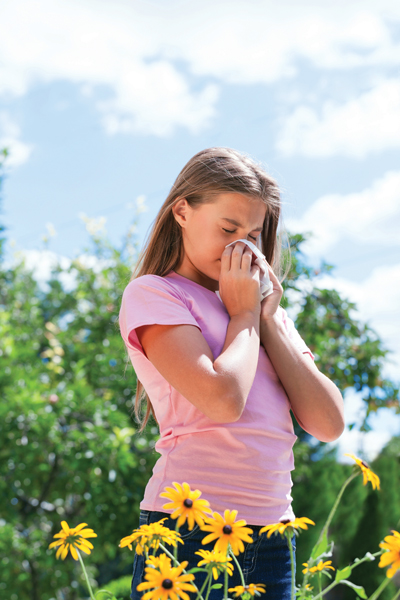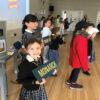
If your child has hay fever it can be extra challenging for parents, with symptoms that include itchy eyes, runny nose, sneezing and general exhaustion. But there are things you can do to help. Below, trusted airborne allergens expert, Max Wiseberg, gives his ten top tips.
“As with many other things, prevention is better than cure!” says Max. Here are my ten tips to help reduce your child’s pollen load. The less pollen there is in the body, the less there is to react to. We can all tolerate a certain amount of pollen without any reaction. Keeping your child below this level will mean they have no reaction.
1 Limit your child’s exposure to pollen during peak periods. Pollen is released early in the morning and travels upwards as the air warms up. In the evening, as the air cools, it moves back down again. Symptoms are usually worst during the early morning and evening, when the pollen grains reach nose height, so try to keep children indoors at these times.
2 Encourage your child to wear wraparound sunglasses. This creates a protective layer between their eyes and the pollen-laden atmosphere, and can reduce symptoms considerably. It also relaxes their eyes, which in turn relaxes them. And it’s cool!
3 Change children’s clothes daily and after they’ve been playing outside and ask them to wash their face and hair after periods spent outdoors. Pollen sticks to clothing, skin and hair so symptoms can continue even when they get indoors. Washing or showering will remove any pollen remaining on the skin and hair.
4 Vacuum the house regularly (especially your child’s bedroom carpet, bed and fabrics) to remove pollen particles.
5 Wash their bedding frequently. Pollen grains come indoors borne on the air and stick to bedding, so frequent washing will help. Covering the bed with a sheet which is carefully folded and stored away from the bed during the night, before they get into bed, and turning pillows just before they get in, can also help reduce symptoms.
6 Close windows and doors to prevent pollen blowing into your home.
7 Tie your child’s hair up and encourage them to wear a hat or cap when outside to prevent pollen particles being caught in their hair.
8 Ensure your child has plenty to drink and encourage them to eat lots of fruit and vegetables to stay healthy and support their immune system.
9 Take your child to the GP, to get a proper diagnosis. If the symptoms occur only in high summer on hot, sunny days, it’s almost certainly hay fever. But it could be any of a number of other allergies and treatment might differ for each.
10 Make HayMax Kids part of your child’s daytime and bedtime routine. Apply this organic drug-free allergen barrier balm immediately after washing/showering first thing in the morning and before going to bed. Pop a pot in your daytime bag and leave a pot by their bed so it can be re-applied as needed. In independent studies [1], HayMax has been shown to trap over a third of the pollen before it gets into the body: less pollen, less reaction. And as it’s drug-free, HayMax is suitable for pregnant and breast-feeding women as well as children.
And of course the same applies to parents with hay fever too. Apply your HayMax regularly, change your clothes, wash or shower when returning home, wear wraparound sunglasses, wash your bedding frequently and stay indoors during peak pollen times.










